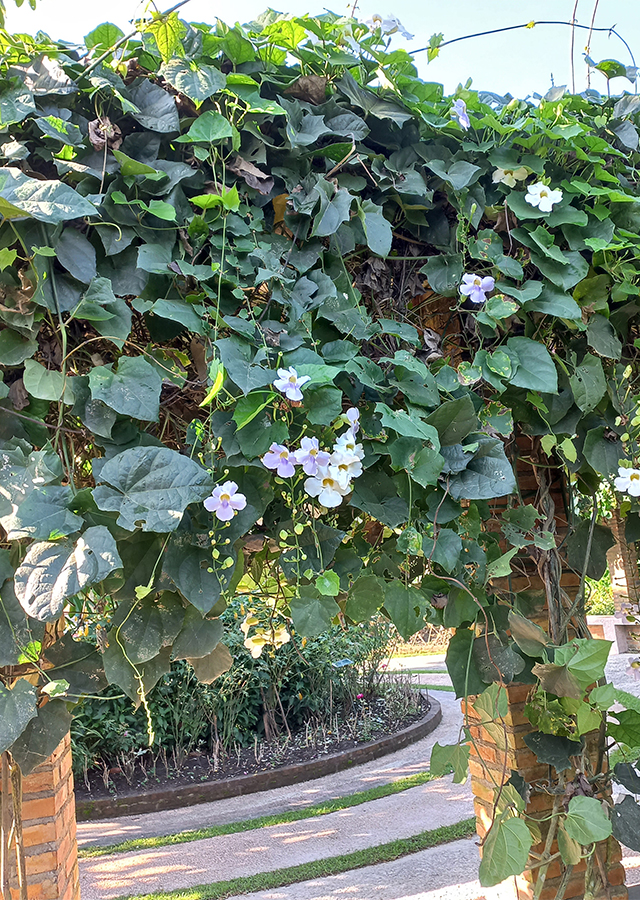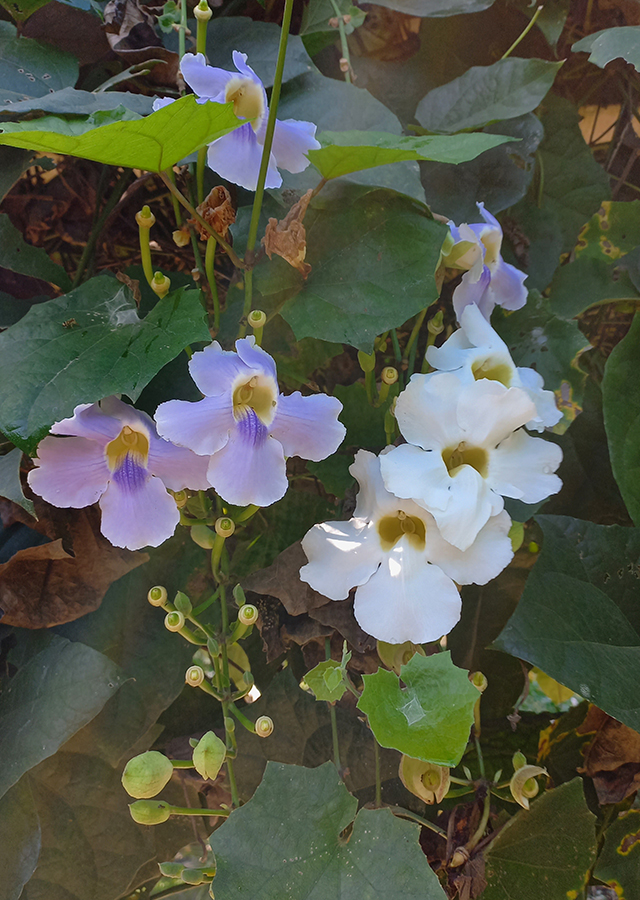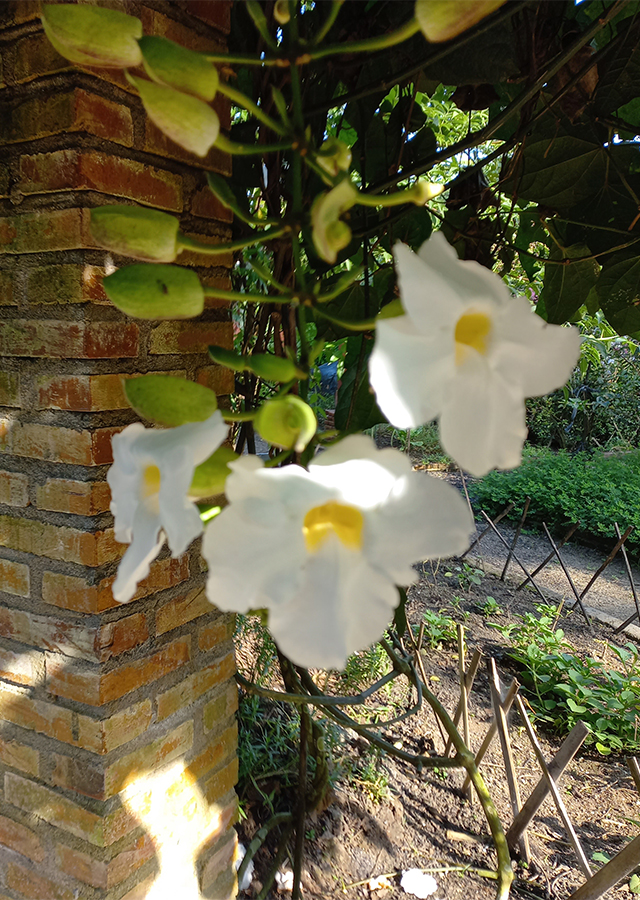Traditional Herbs from Thunbergia grandiflora
snake_bite medicine
- Prepare enough thunbergia leaves, wash them thoroughly.
- Crush them until they become a paste.
- Apply on the snake bite wound.
What is Thunbergia grandiflora Looks like??



Parts of Thunbergia grandiflora that could be used
- Leaves", "Flowers", "Roots", "Sap", "Stem
Thunbergia grandiflora Distribution
Thunbergia grandiflora originates from India, parts of China and South Asia, but is widely cultivated and naturalized in tropical and subtropical areas. Today, this plant can be found in Mexico, Central America, the West Indies, South America, tropical Africa, Southeast Asia, Australia and the Pacific Islands. Thunbergia grandiflora is an economically important species that is widely cultivated as an ornamental plant and hedge plant in tropical and subtropical areas, although in several countries this plant is classified as a "dangerous weed" including in Australia. In tropical Africa (Tanzania and Uganda), this plant has been used as a source of green manure and firewood. Even Thunbergia grandiflora also has health benefits and has been used as a medicinal plant in traditional medicine in Asia and Africa. Additionally, the leaves can be cooked as a vegetable.Agroecology of Thunbergia grandiflora
Thunbergia grandiflora can usually be found growing on forest edges, roadsides, river banks, open forests, plantations in tropical and subtropical areas, at an altitude of 200-1,300 m above sea level. Its growth requires a position in full sun and is intolerant of shady conditions with average annual rainfall ranging from 500-3,500 mm. This plant likes fertile, moist, but well-drained soil.
Morphology of Thunbergia grandiflora
- The root has a tuberous root with a deep taproot, the root is constantly sprouting.
- The stem is cylindrical, 4-angled, striated, pubescent, the cross-section of the stem with a hollow pith. Young stems are green while older stems are quite thick, the color turns brown and becomes somewhat round in shape.
- Leaves are opposite, the shape of the leaf blade varies, from ovate to triangular-ovate, the tip of the leaf is sharp to tapered, the base of the leaf is heart-shaped (cordiform), sharp-toothed leaf margins. Upper surface is dark green, shiny, pubescent, lower surface is light green, dull, glabrous or pubescent, with prominent venation.
- Flowers are large, trumpet-shaped, solitary, paired in leaf axils or arranged in terminal racemes and drooping (hanging) with 2\u20134 flowers per node (petals green, ring-shaped, corolla purple-blue or white,). with 5 lobes, tube 6-7 cm long, light yellow inside, narrowed at the base.
- Fruit is capsule-shaped, pubescent, subglobose at the base, beak-shaped at the top, broken into two parts.
- Seeds small, ovoid, flat, covered with brown scales.
Cultivation of Thunbergia grandiflora
Generative (seed) and vegetative propagation (stem cuttings, stolons).
Thunbergia grandiflora, more details :
Chemical Content of Thunbergia grandifloraAlkaloids, phenols, iridoid glycosides, isounedoside, grandifloric acid, essential oils (α-3- octanol, 3,7 dimethyl 1,6-octadien-3-ol, 2-methoxy-3-(2-propenyl) phenol, methyl salicylates, ipropyl hexadecanoate).
Benefits of Thunbergia grandiflora
Treating snake bites, swelling due to falls or broken bones, dysentery, cataracts, diabetes, gout, malaria, marasmus (lack of energy and protein intake), ophthalmia (inflammation of the eyes), postpartum preeclampsia, rheumatism, elephantiasis, heart disease, complaints stomach, menorrhagia (excessive menstruation), ear infections, treats drug and alcohol abuse, has antipyretic, anthelmintic, antioxidant and anti-inflammatory activity.
Simplisia of Thunbergia grandiflora
- Prepare enough fresh thunbergia leaves, wash them thoroughly with running water.
- Dry them in the sun or in an oven at a temperature\u00a040\u00b0C until the water content\u00a010%.
- Clean them using a blender until they become powder.
- Store in a clean, airtight container.
Another Facts for Thunbergia grandiflora :
Synonym of Thunbergia grandifloraPleuremidis grandiflora (Roxb.) Raf., Thunbergia adenophora W.W.Sm., Thunbergia cordifolia Nees.
Habitus of Thunbergia grandiflora
Creepers. Vines, annual, reaching 10-20 m in length
Habitat of Thunbergia grandiflora
- Riverside", "Forest", "Coast", "Roadside", "Grassland", "Land
No comments:
Post a Comment